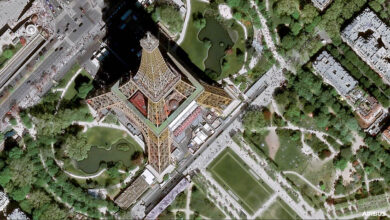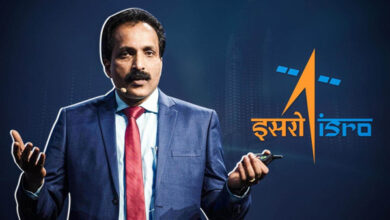Gaganyaan-ISRO gearing up for series of tests
By R. Anil Kumar
- Gaganyaan will be the first of a series of ambitious spacefaring goals for India, including sending humans to Moon by 2040
- After the successful Test Vehicle-D1 (TV-D1) mission on October 21, the Indian Space Research Organisation (ISRO) has lined up more test missions in the months ahead for the Gaganyaan programme
- Upcoming tests include the TV-D2 mission, the G-X unmanned orbital demonstration flight, an Integrated Air-Drop Test (IADT) and a Pad Abort Test
Bangalore, October 31. The Indian Space Research Organisation (ISRO), which successfully carried out an in-flight abort test as part of Gaganyaan mission will attempt an integrated air drop test involving dropping of the crew module from a helicopter next, while other abort tests are scheduled to be carried out thereafter.

A crew module with service module will be used in the G-X mission. This unmanned mission, to be launched aboard a human-rated LVM3, will have ‘Vyommitra’ – the ‘female’ robot astronaut designed and developed by the ISRO Inertial Systems Unit (IISU) – on board. In this mission, ISRO will put to test control systems, a “reduced version” of the life support system for the crew, thermal protection systems and the parachute systems.
As the space agency was carrying out analysis of the recovered crew module (CM) mission while other data from the crew escape system (CES) and CM from its descent was also being studied.
Besides from understanding the data for the performance of the various systems, which ISRO chairman S Somanath had said prima facie, performed as planned, the space agency will also look at how the systems within the CM have survived after the impact on the Bay of Bengal.
Close on the heels of this mission, ISRO, as per current plans, will carry out an integrated air drop test, he said.
“When this test will be scheduled will depend on what we learn from the in-flight abort test, tentatively, we are looking at December.
The integrated air drop test will see the module being dropped using a helicopter over the sea. It will help understand impact from various heights and velocity which we can compare with designs for nominal conditions,” Somanath stated.
Once the air drop test is complete, ISRO is expected to conduct another pad abort test (PAT) — where an anomaly would be simulated while the vehicle carrying the CES and CM is still on the launch pad, leading to an abort and taking the crew module to safety.
While the space agency had carried out a PAT in 2018, testing multiple new technologies in one mission, ISRO chairman S Somanath had told earlier this year that they will have to redo the crucial PAT as there has been substantial design changes since the previous PAT.
“So, the PAT is no longer valid. The complete system of the Gaganyaan crew module and CES has seen major changes, which means we have to repeat PAT.
Meanwhile, the Test Vehicle (TV) development programme will continue parallelly. TV-D2 will be the second of four tests planned for demonstrating in-flight abort capability under different initial conditions with respect to the launch vehicle. Unlike TV-D1, TV-D2 will also have onboard a control system for re-orienting the attitude of the crew module once it separates.
The test vehicle will be the same, expendable version based on the L40 strap-on of the multi-purpose vehicle Geosynchronous Satellite Launch Vehicle (GSLV) used in TV-D1 mission. TV-D1 demonstrated the in-flight abort of the Crew Escape System (CES) at 1.2 Mach speed, which was followed by the separation of the crew module and its recovery from the sea.
At the same time, ISRO is also examining whether the TV-D1 crew module, recovered from the sea after a parachute-assisted splash-down, can be reused for future tests. The space agency is looking into this possibility.
The lead unit of ISRO for launch vehicles, VSSC was responsible for the structural design and manufacture of the unpressurised crew module used for the test.
As the module had come into contact with salt water, only a detailed inspection can tell whether it can be reused and in what capacity. ‘‘We are working out a plan to reuse it. We need to open and clean it and see what can be done. Efforts will be taken to divert it for the appropriate test programme under Gaganyaan,” he said.
The spaceport is also creating multiple new infrastructure as part of preparations for Gaganyaan, which will be the precursor to more ambitious goals — establishing a space station by 2035 and sending humans to Moon by 2040 — set by Prime Minister Narendra Modi.





